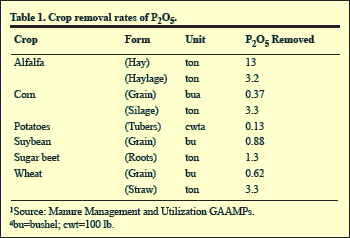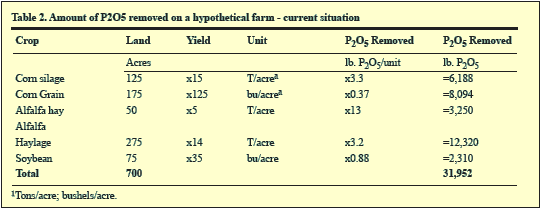



AI Bulls Ranked by Conception Rates
By Kathy Lee, Extension Dairy Agent, and published in Dairy Review, Michigan State University Extension. Improving fertility is a common goal for many dairy herds. Getting cows pregnant in a timely manner is important in maintaining a profitable dairy business.Let’s look at the factors influencing conception rates in dairy cattle and tools available to rank bulls on fertility.
Improvement in many traits of interest in dairy cattle can be achieved in two ways. You can select animals that are genetically superior for the traits. Or you can make management changes that positively impact the traits. Quite often dairy producers use a combination of the two approaches.
Selection based on accurate genetic evaluations yields cumulative responses over time but will be slow when heritabilities are low (i.e. the proportion of variation due to genetics is small). The relative emphasis placed on genetic selection for a specific trait depends on its heritability and economic importance.
Factors Influencing Conception Rates
Conception rates are influenced by a variety of factors. Management and environmental factors account for 96% of the variation in conception rates. Herd differences in nutrition, metabolic disorders, reproductive health, heat detection, and climate can result in significant differences in conception rates.
The remaining 4% of variation in conception rates is due to genetic factors with 3% for the cow and 1% for the service bull. These small values indicate that improvement in conception rates due to genetic selection will occur at a relatively slow rate. Nonetheless, given the significant economic importance of getting cows pregnant, some selection for improved fertility may be justified in a herd’s genetic program.
Genetic evaluations for cow fertility have been calculated since February 2003 and are expressed as predicted transmitting abilities for Daughter Pregnancy Rates (PTA DPR). In addition, the trait, PTA DPR, was added to the Net Merit (NM$) index in August 2003 to allow for efficient selection for DPR. (See articles in April 2003 and October 2003 issues of Michigan Dairy Review for more details.)
Service bull conception rates can be evaluated by using Estimated Relative Conception Rate (ERCR) data. This article focuses on the ERCR calculations and how to use ERCR in sire selection decisions.
What is ERCR?
ERCR measures 70-day non-return rate of an AI service bull relative to service bulls of herdmates. A cow is assumed pregnant if no repeat breeding or heat is reported within 70 days. Adjustments are made for environmental factors that can affect conception rates, including herd, lactation number of the cow, stage of lactation, month of breeding, and milk production of each cow. Only the first breeding in each cow’s lactation is used in the ERCR calculations.
ERCRs are computed by Dairy Records Management Systems (DRMS) in Raleigh, NC and Ames, IA twice yearly (May and November). Data from DRMS, AgSource in Wisconsin and AgriTech Analytics in California are used to calculate the ERCRs for Holsteins and Jerseys. AI breedings from the most recent 3 years are used.
ERCRs can be accessed at the DRMS website: www.drms.org/sire.htm.
Interpreting ERCRs
ERCR for a given bull is expressed as the difference in conception rate from the average AI service bull of herdmates. The ranges of ERCRs published in May 2004 are -5% to +4% for Holstein bulls and -7% to +4% for Jersey bulls. When comparing a bull at +4% with an average bull at 0% within the same breed, you would expect conception rates to average 4 percentage units greater for the higher ranking ERCR bull. Although the ranges between the most extreme bulls for ERCR were 9% for Holsteins and 11% for Jerseys, a vast majority of the bulls had ERCRs from -3% to +3% (96% for Holsteins and 87% for Jerseys).
Accuracy of ERCR
The accuracy of ERCR is reported as repeatability. Repeatabilities for ERCR range from 48 to 99 with 99 representing the most accurate ERCR. The number of breedings is also reported for each ERCR. At least 300 first breedings are needed for an ERCR to be published. In May 2004, 47% of active AI Holstein bulls and 42% of active AI Jersey bulls had published ERCRs. ERCRs for first proof AI bulls may not be available until at least 6 months after the initial release of the bulls.
Using ERCRs
When incorporating ERCRs into a sire selection protocol, you may be tempted to place primary emphasis on selecting bulls with high ERCRs to improve conception rates. It is important to keep the use of ERCRs in perspective. Remember that the service bull accounts for only 1% of the variation in conception rates.ERCR should be used as a secondary selection tool. You can continue to place primary emphasis on traits that most significantly impact herd lifetime profitability, such as Net Merit. After determining a group of service bulls that meet your primary selection goals, ERCR could be used to fine tune your selections.
Researchers at Virginia Tech reported that a premium of $2 could be paid per each 1 percent ERCR. For example, let’s look at two bulls that have similar genetic merit for your primary selection traits. One bull has an ERCR of +3% and the other bull’s ERCR is 0%. You could justify paying $6 more for the bull with the higher ERCR. (3 units ERCR x $2). In another example, you are considering Bull A at +1% ERCR and +$500 NM$, and Bull B at -3% ERCR and +$600 NM$. If you choose Bull A, you will give up $100 potential lifetime profit (NM$) for an $8 advantage in ERCR. Be sure to consider the overall impact of your sire selection decisions.
Summary
Keep these key points in mind when using ERCRs to make sire selection decisions.- Management and environmental factors have the greatest influence on variation in conception rates. Identify those management changes that can significantly improve conception rates for your herd.
- Primary selection of service sires should be based on high lifetime profitability.
- ERCRs can be used as a secondary sire selection tool to identify higher ranking bulls for conception.
- DRMS-Bull Fertility Summary. May 2004. http://www.drms.org/sire.htm.
- Pecsok, S.R. et al. 1994. J. Dairy Sci. 77:3008-3015.
- Weigel, K. 2001. http://www.naab-css.org/education/ UsingERCR.html.


July 2004



